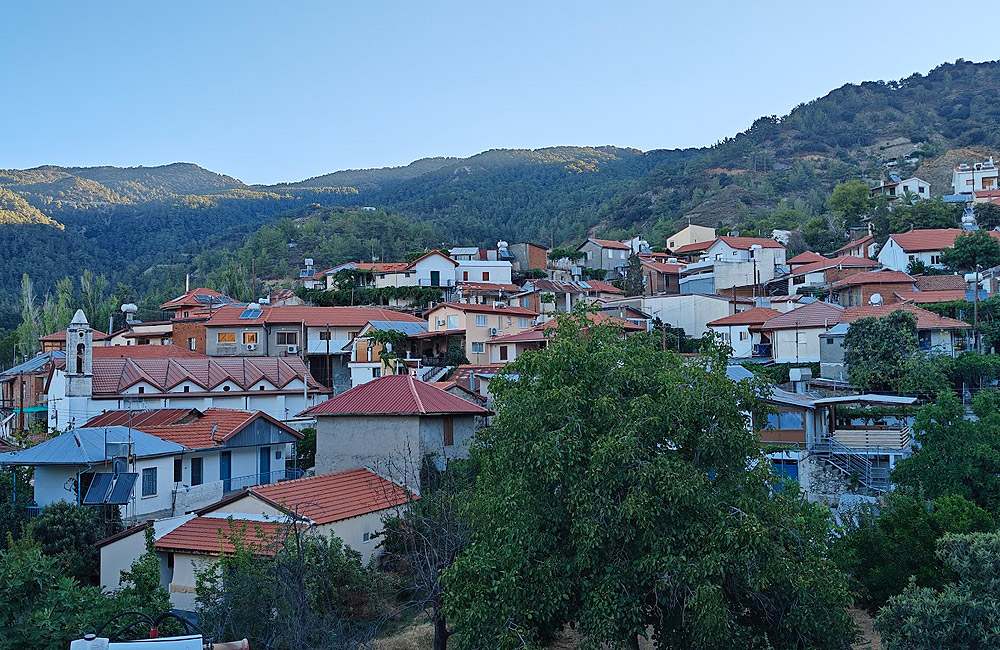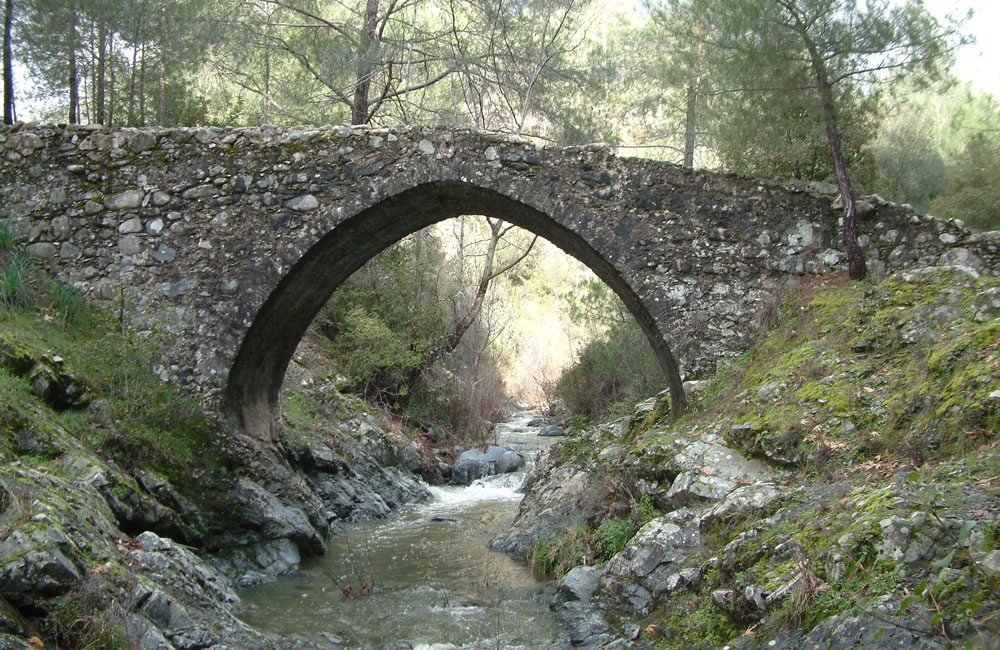Location
Phini is one of the most graphic villages of Cyprus and is built in a verdurous environment in the mountains of Troodos, at an average altitude of 920 meters, among steep slopes and mountaintops ridden with the green of pines. The village is found 44 kilometers northwest of the city of Limassol. Turnpike streets connect it with the village Agios Dimitrios in the northwest, with Kato Platres in the south and with Pano Platres in the east. The state forests of Troodos and Pafos take up a large part of its administrative domain. The monastery of Panagia Trooditissa is found in the north of the village and the church of Agioi Anargyroi - also a monastery - is found in the southeast. The waterfall of Phini, situated in the -all green -area of "Hantara", completes the picturesque beauty of the village.

Name
According to one version, Phini took its name during the Frank era from a Frank feudal lord -Juan De Fejniu or Feniu- that had accompanied the King of Cyprus Peter I in Europe (1359-1369). Whether the Frank nobleman was actually an owner of the village has not been absolutely confirmed because the village is not mentioned anywhere as a feud. Even if he was, he most probably adopted the name of his village as his surname, something quite common for the era.
 Most probably the village existed during the Byzantine years and its name originates from Palm, in Greek "Foinikas", the known tree or its fruit "Foiniki". Several other villages and regions of Cyprus carry names that originate from that word.
Most probably the village existed during the Byzantine years and its name originates from Palm, in Greek "Foinikas", the known tree or its fruit "Foiniki". Several other villages and regions of Cyprus carry names that originate from that word.
Climate
Phini receives an average annual rainfall of about 830 millimeters; winemaking vine varieties, several kinds of fruit (apples, pears, peaches, and plums), walnuts, a few vegetables and citrus trees are cultivated in the land. The temperature during the winter months ranges between 10-15? C and between 25-30? C in the summer.
Population
During the course of its history and until today the village has gone through some great population fluctuations. In 1881 the inhabitants of the village numbered 308 and increased to 501 in 1901. Then the population increased to 760 in 1931 and to 922 in 1946. In 1960 the population increased to 924 only to be reduced to 894 in 1973. In 1976 population increased to 906 and was reduced to 676 in 1982. Today, in 2002, the inhabitants of the village number 445.
Traditional Arts
The morphology of the ground -with limited tillable land- forced the inhabitants of Phini to occupy themselves with several other jobs so as to be able to survive. So, with the passage of time, Phini became known for its pottery, for the manufacturing of traditional furniture, and for the making of the "loukoumi" (Turkish Delight, a sweet that resembles marsh mallow) of Phini.
 |
 |
 |
Pottery
Because of the tradition of the village in pottery, it has become a point of attraction for locals and foreigners that want to admire this unique art from up close.
A private museum of folkloric art in Phini hosts many artifacts of folkloric art -such as pottery articles, traditional agricultural tools, traditional kitchen utensils, and several more -are on display there. There are three pottery workshops in the village as well as one workshop for the making of Phiniotika Loukoumia. Also there are quite a few traditional taverns presently in the village, offering opulent and tasty Cypriot cuisine. The youth center of the village also works as a cafeteria. A Trout farm also operates in Phini.
 |
 |
Community Council
The Community Council of Phini, in cooperation with the Association of Emigrants of the village and the Department of Cypriot Handicraft (Ministry of Commerce, Industry, and Tourism), is undertaking a multifaceted effort for research, preservation and promotion of the art of pottery, simultaneously encouraging young people to study the craft of the potter. In the venue of the old elementary school, which has been preserved and turned into a cultural center, a special department of pottery has been created where anyone who is interested can learn about this craft.


